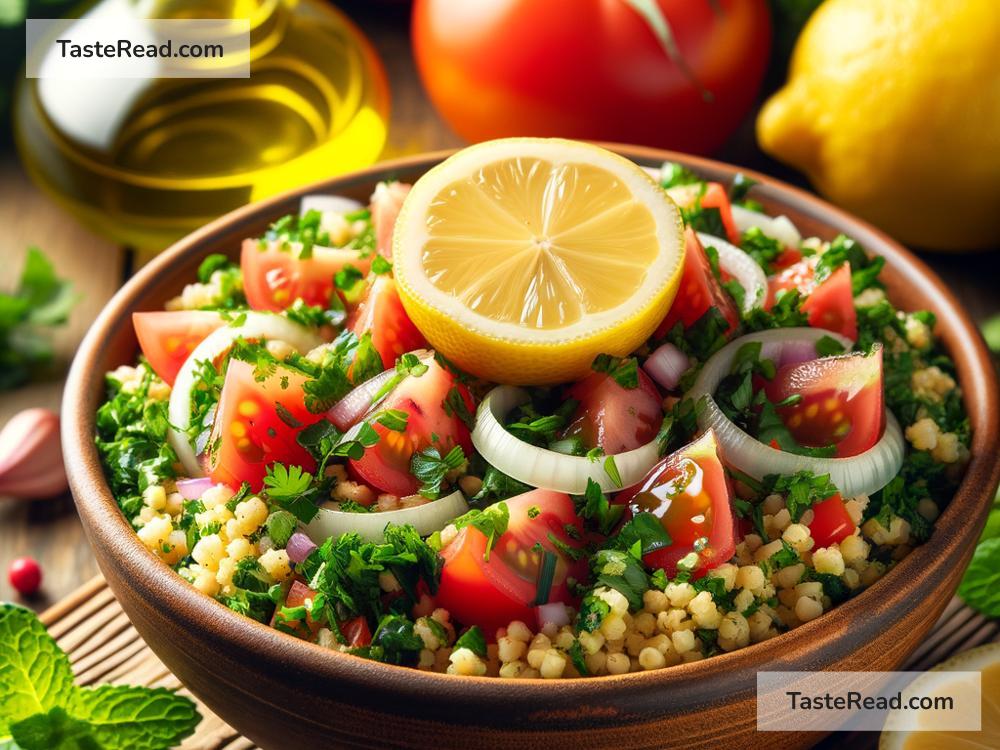How to Prepare Authentic Lebanese Tabouleh
If you’re a food lover who enjoys fresh, healthy, and flavorful dishes, Lebanese tabouleh should be high on your list! This iconic Middle Eastern salad is not only delicious but also packed with nutritious ingredients. It’s light, refreshing, and perfect for lunch, dinner, or even as part of a party spread. In this blog, we’ll show you how to prepare authentic Lebanese tabouleh using simple, easy-to-follow steps.
What Is Tabouleh?
Tabouleh (also spelled tabbouleh or tabouli) is a traditional Lebanese salad made with fresh parsley, mint, tomatoes, onions, bulgur wheat, olive oil, and lemon juice. Unlike other salads, parsley is the star ingredient in tabouleh—not lettuce. The combination of fresh herbs and tangy flavors makes it a unique and delightful dish.
Why Choose Authentic Lebanese Tabouleh?
Authentic Lebanese tabouleh is about balance. Many Western versions often use too much bulgur wheat, turning tabouleh into a grain-based salad. However, traditional Lebanese tabouleh focuses on the herbs (mainly parsley) with bulgur wheat playing a supporting role. By following the authentic recipe, you’ll experience the real magic of this dish.
What You’ll Need
Here is a simple list of ingredients you need to prepare authentic Lebanese tabouleh:
Ingredients:
- Flat-leaf parsley – 2 large bunches
- Fresh mint leaves – 10-15 sprigs
- Ripe tomatoes – 3 medium-sized (or 2 large)
- White onion or spring onions – 1 small (or 3-4 spring onions)
- Fine bulgur wheat – ¼ cup
- Lemon juice – 2-3 tablespoons (freshly squeezed)
- Extra-virgin olive oil – 3-4 tablespoons
- Salt – 1 teaspoon (or to taste)
- Optional: Black pepper or a pinch of cinnamon
Equipment:
- A sharp knife
- A large mixing bowl
- A colander or sieve
- Cutting board
- A juicer (optional)
Step-by-Step Instructions to Make Lebanese Tabouleh
Step 1: Prepare the Bulgur Wheat
Start by soaking the fine bulgur wheat in warm water. Use ¼ cup of bulgur and cover it with just enough warm water to soften it. Let it sit for about 10-15 minutes until the grains are tender. Then, drain any excess water using a colander or sieve and set the bulgur aside.
Step 2: Wash the Herbs
The parsley and mint are the heart and soul of tabouleh, so they need to be perfectly fresh and clean. Wash them thoroughly in cold water to remove dirt or debris. After washing, pat the herbs dry with a clean kitchen towel or paper towels. Removing excess moisture is important to ensure your salad isn’t soggy.
Step 3: Chop the Parsley and Mint
Trim the stems off the parsley and mint. Then, finely chop the leaves using a sharp knife. Take your time with this step, as finely chopped herbs give the dish its signature texture. Remember, parsley should make up the majority of the herb mixture, while mint adds a refreshing touch.
Step 4: Dice the Tomatoes
Choose ripe, juicy tomatoes for the best flavor. Cut the tomatoes into small cubes, making sure to remove any excess juice (you don’t want a watery salad). Feel free to drain the diced tomatoes on a paper towel before adding them to the mix.
Step 5: Chop the Onion
Whether you use white onion or spring onions, chop them finely. Onions add a mild sharpness that complements the tangy and fresh flavors of tabouleh. If you’re not a fan of strong onion flavors, soak the chopped pieces in cold water for a few minutes before draining and adding to the salad.
Step 6: Mix Everything Together
In a large mixing bowl, combine the chopped parsley, mint, diced tomatoes, onions, and softened bulgur wheat. Toss gently to mix everything evenly.
Step 7: Add Lemon Juice, Olive Oil, and Salt
Drizzle fresh lemon juice and extra-virgin olive oil over the salad. Sprinkle salt (and optional black pepper or cinnamon) to season. Mix well but gently, ensuring every ingredient is coated with the dressing.
Step 8: Taste and Adjust
Taste your tabouleh and adjust the seasoning if needed. You can add more lemon juice for extra tanginess, or olive oil for richness. The beauty of tabouleh lies in the balance of flavors and textures.
Serving Suggestions
Lebanese tabouleh is typically served as part of a mezze (a collection of small dishes) alongside hummus, baba ghanoush, and fresh pita bread. You can also pair it with grilled meats like chicken or lamb, or enjoy it on its own as a light and healthy meal.
Tips for Authentic Tabouleh
- Fresh ingredients: Always use fresh parsley, mint, and ripe tomatoes for the best results. Freshness makes all the difference!
- Finely chop: Take the time to finely chop the herbs and vegetables. This gives the salad its characteristic texture.
- Go easy on the bulgur: Traditional Lebanese tabouleh uses just a small amount of bulgur wheat. Don’t let the grains overpower the herbs.
- Serve immediately: Tabouleh is best served fresh. Prepare it just before mealtime for maximum flavor.
Final Thoughts
Authentic Lebanese tabouleh is a celebration of fresh ingredients and bold flavors. With its vibrant colors and refreshing taste, it’s no wonder this salad has become popular around the world. Whether you’re introducing it to your friends or making it for your family, this simple recipe ensures you’ll enjoy a true taste of Lebanon.
So, roll up your sleeves, gather your ingredients, and give this dish a try. Once you taste your homemade tabouleh, you’ll want to make it again and again! Bon appétit—or as they say in Lebanon, “Sahtein!” (To your health!)


